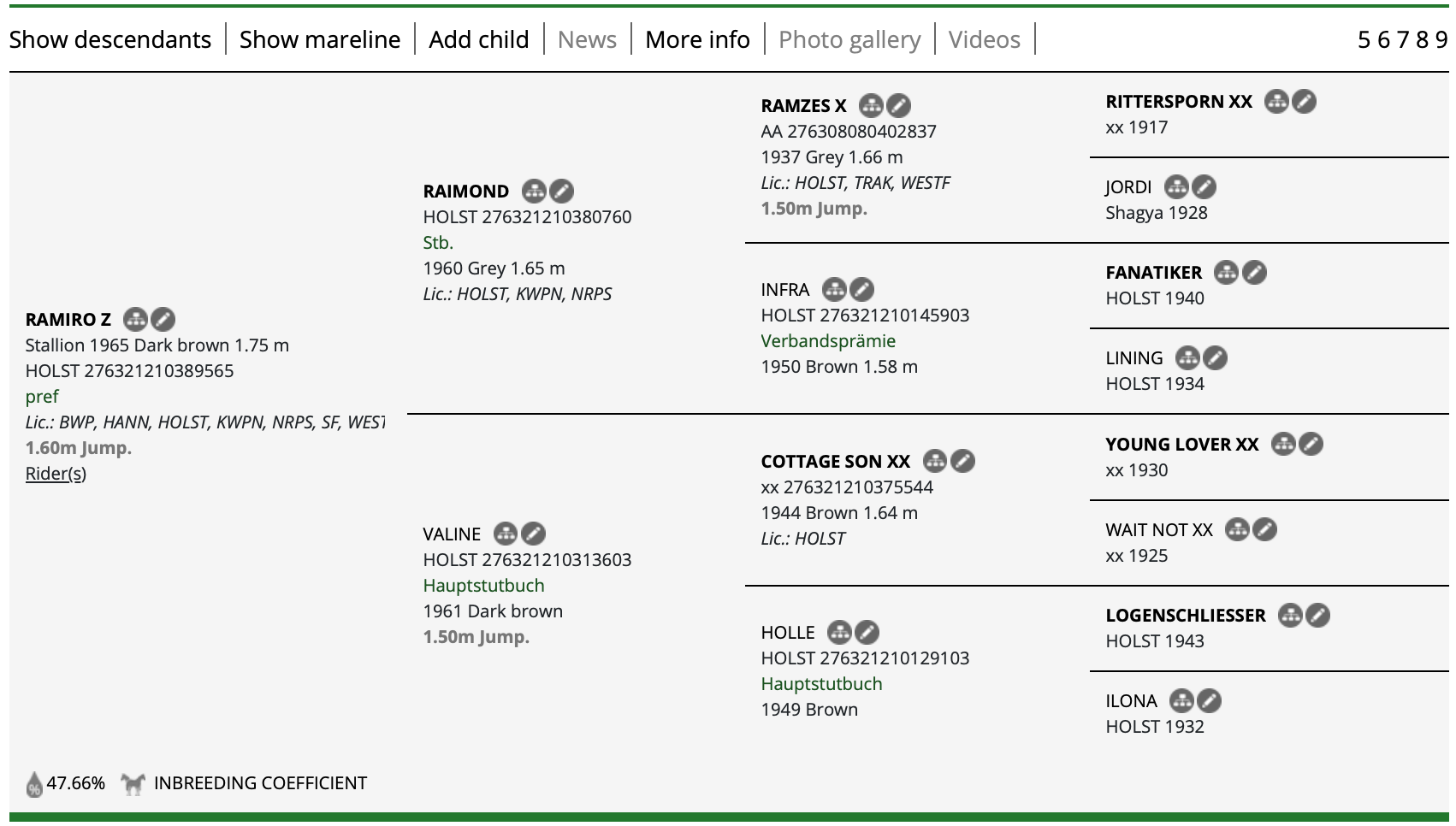Ramiro
A Stallion of Legendary Influence
The Anglo stallion Ramzes left an indelible mark on sport horse breeding, standing in Holstein twice during his career. His second tenure produced four licensed stallions: Roman, Rigoletto, Raimond, and Rhenus. Of these, Rigoletto was sold to the Netherlands, while Rhenus found his way into circus performances. Roman proved to be a strong competition horse and an exceptional sire of broodmares. However, it was Raimond who stood out as a more refined type, producing over 120 daughters and eight licensed stallions—though only one, Ramiro, would rise to global prominence.
Born in Westfalia, but conceived in Holstein, Ramiro was licensed at Neumünster and later excelled in international competition under Fritz Ligges. His influence extended across Europe, shaping the breeding programs of Holstein, Westfalia, Zangersheide, and the Netherlands. At one point, he was the most sought-after sire in Germany, a testament to his unparalleled qualities.
When presented for licensing, Ramiro was hailed as the epitome of the modern Holsteiner. He inherited the strong top line of his grandsire, Cottage Son xx, along with an imposing yet elegant frame, a well-proportioned neck, and a distinguished head with expressive, intelligent eyes. His movement was equally noteworthy—his walk was fluid, his trot correct, and his canter exceptional, a trait he consistently passed to his offspring.
Ramiro’s sire, Raimond, was born in 1960 out of Infra, a mare by Fanaticker. According to The Holsteiner Horse, his offspring were known for their uniformity, strong character, reliability, and rideability, particularly when crossed with Thoroughbred mares. While Raimond produced several approved stallions, Ramiro, born in 1965 out of Valine (by Cottage Son xx), was the only one to achieve widespread success. Interestingly, Valine, his dam, had only one foal before moving to Italy, where she proved herself as a talented showjumper.
Ramiro’s legacy endures through his countless successful descendants, cementing his place as one of the most influential stallions in modern sport horse breeding.


